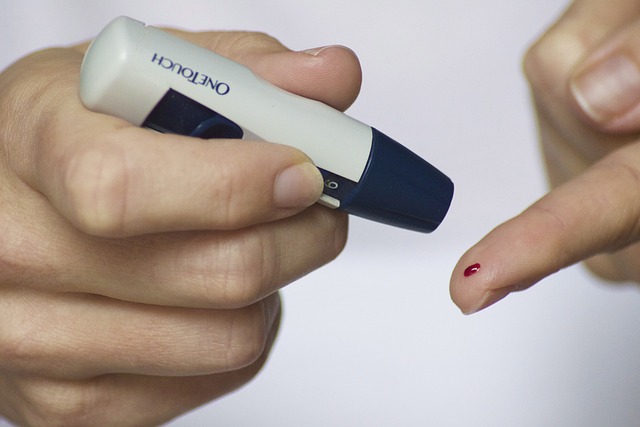
Diabetes is a chronic condition that affects millions of Americans, impacting their ability to regulate blood sugar levels. Understanding diabetes, its types, symptoms, and prevention strategies is crucial for effective management and reducing the risk of complications. In this article, we will explore the different types of diabetes, their symptoms, and effective prevention methods to help individuals lead healthier lives.
What is Diabetes?
Diabetes is a metabolic disorder characterized by high blood sugar (glucose) levels. This occurs either because the body does not produce enough insulin (a hormone that regulates blood sugar) or because cells do not respond effectively to insulin. Over time, high blood sugar can lead to serious health complications, including heart disease, kidney failure, and vision loss.
Types of Diabetes
There are three primary types of diabetes: Type 1, Type 2, and gestational diabetes.
1. Type 1 Diabetes
Type 1 diabetes is an autoimmune condition where the body’s immune system attacks and destroys insulin-producing beta cells in the pancreas. This type of diabetes typically develops in children or young adults, but it can occur at any age.
Symptoms of Type 1 Diabetes:
- Increased thirst
- Frequent urination
- Extreme fatigue
- Blurred vision
- Unintended weight loss
Management: People with Type 1 diabetes require lifelong insulin therapy, regular blood sugar monitoring, and a healthy diet to manage their condition effectively.
2. Type 2 Diabetes
Type 2 diabetes is the most common form of diabetes, accounting for about 90-95% of all diagnosed cases. It occurs when the body becomes resistant to insulin or when the pancreas fails to produce enough insulin. Type 2 diabetes often develops in adults, but it is increasingly being diagnosed in children and adolescents due to rising obesity rates.
Symptoms of Type 2 Diabetes:
- Increased thirst and hunger
- Frequent urination
- Fatigue
- Blurred vision
- Slow-healing sores or frequent infections
Management: Type 2 diabetes can often be managed through lifestyle changes, including a healthy diet, regular physical activity, and weight loss. Some individuals may also require oral medications or insulin therapy.
3. Gestational Diabetes
Gestational diabetes occurs during pregnancy when the body cannot produce enough insulin to meet the increased demands. While it typically resolves after childbirth, women who have had gestational diabetes are at a higher risk of developing Type 2 diabetes later in life.
Symptoms of Gestational Diabetes:
- Often asymptomatic; may include increased thirst and urination
Management: Treatment includes monitoring blood sugar levels, adopting a healthy diet, and engaging in physical activity. Some women may require insulin therapy.
Symptoms of Diabetes
Recognizing the symptoms of diabetes is essential for early diagnosis and management. Common symptoms of both Type 1 and Type 2 diabetes include:
- Frequent urination: Excessive thirst leads to increased fluid intake and more frequent urination.
- Extreme hunger: The body does not effectively use glucose for energy, leading to constant hunger.
- Fatigue: High blood sugar levels can interfere with the body’s ability to use glucose for energy, causing fatigue.
- Blurred vision: High blood sugar can cause swelling in the lenses of the eyes, affecting vision.
- Slow healing: Elevated blood sugar levels can affect blood flow and lead to slower healing of wounds.
Prevention Strategies
Preventing diabetes, particularly Type 2 diabetes, is possible through lifestyle modifications. Here are effective strategies to reduce the risk:
1. Maintain a Healthy Weight
Being overweight is a significant risk factor for Type 2 diabetes. Losing even a small percentage of body weight can significantly reduce the risk of developing diabetes. Aim for a balanced diet rich in whole foods, such as fruits, vegetables, whole grains, and lean proteins.
2. Engage in Regular Physical Activity
Regular physical activity helps improve insulin sensitivity and can aid in weight management. Aim for at least 150 minutes of moderate-intensity exercise each week, such as brisk walking, swimming, or cycling. Incorporating strength training exercises at least twice a week can also be beneficial.
3. Eat a Balanced Diet
Adopting a balanced diet is crucial in preventing diabetes. Focus on:
- Whole foods: Prioritize fruits, vegetables, whole grains, and lean proteins.
- Limit processed foods: Reduce intake of sugary snacks, beverages, and high-calorie, low-nutrient foods.
- Monitor portion sizes: Be mindful of portion sizes to help manage weight and blood sugar levels.
4. Monitor Blood Sugar Levels
For individuals at risk of diabetes or with prediabetes, regular blood sugar monitoring can help identify changes early. This allows for prompt intervention to prevent the progression to diabetes.
5. Avoid Tobacco Use
Smoking increases the risk of diabetes and can complicate management for those already diagnosed. Quitting smoking has numerous health benefits, including reduced risk of chronic diseases.
6. Manage Stress
Chronic stress can affect blood sugar levels and overall health. Incorporate stress management techniques such as mindfulness, meditation, yoga, or deep breathing exercises into your daily routine.
Conclusion
Understanding diabetes is essential for prevention and effective management. By recognizing the types of diabetes, their symptoms, and implementing preventive strategies, individuals can significantly reduce their risk of developing diabetes or manage their condition effectively.
Education is a powerful tool in the fight against diabetes, enabling individuals to make informed decisions about their health. By prioritizing a healthy lifestyle, you can take charge of your health and reduce the risk of chronic conditions like diabetes.


